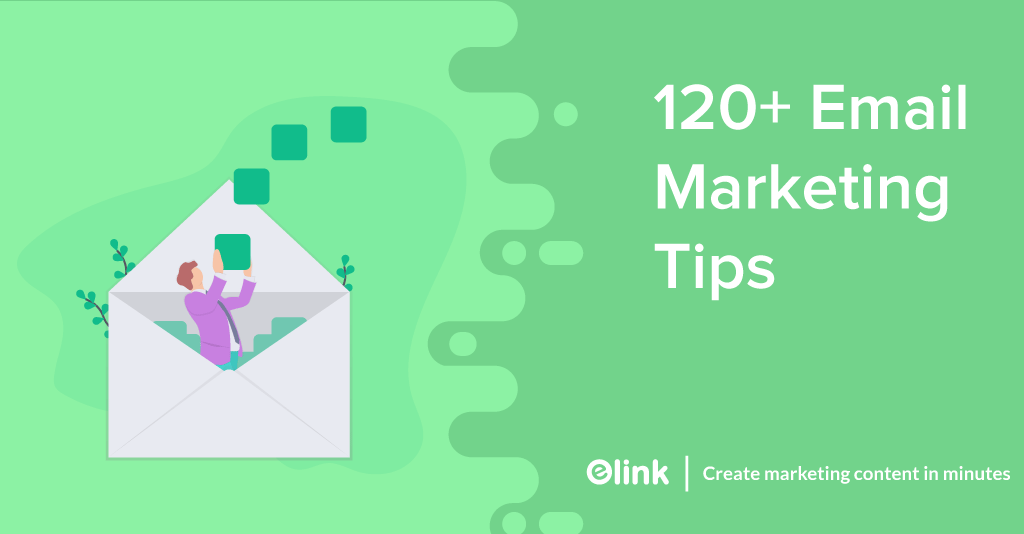Email Marketing:
Email marketing is one of the most effective ways to connect with customers and promote your business. But it can be tricky to get started, and even more difficult to stand out in a crowded inbox. That’s why we’ve put together a list of 15 powerful email marketing tips, to help you get started on the right foot.
1. Keep your emails short and to the point.
2. Use an attention-grabbing headline.
3. Use images and videos to break up your text and add visual interest.
4. Use links to direct readers to your website or blog.
5. Use calls to action to encourage readers to take a specific action, such as signing up for your email list or visiting your website.
6. Personalize your emails as much as possible.
7. Timing is everything. Send your emails at a time when your subscribers are likely to be online and checking their inboxes.
8. Make sure your emails are responsive, so they look great on both desktop and mobile devices.
9. Use A/B testing to test different versions of your emails and see what works best.
10. Keep your email list clean and up to date. Remove inactive subscribers, and segment your list so you can send more targeted emails.
11. Use an email marketing service like MailChimp or Constant Contact to manage your email list and help you stay compliant with anti-spam laws.
12. Make sure your emails are compliant with the CAN-SPAM Act.
13. Keep an eye on your email metrics, so you can see how your campaigns are performing and make necessary changes.
14. Always be prepared to adjust your email marketing strategy as your business grows and changes.
15. And finally, have patience! Email marketing takes time and effort, but it can be a hugely effective way to reach your customers and grow your business.
1. What is email marketing?
Email marketing is the process of sending commercial messages, typically to a group of people, using email. In its broadest sense, every email sent to a potential or current customer could be considered email marketing. However, the term is usually used to refer to:
Sending emails with the purpose of enhancing the relationship of a merchant with its current or previous customers, encouraging customer loyalty and repeat business, acquiring new customers, or convincing current customers to purchase something immediately.
Sending emails with the purpose of acquiring new customers or convincing current customers to purchase something immediately.
Email marketing is an efficient way to stay in touch with your customers and promote your business at the same time. You can use email marketing to build relationships, drive sales, or both.
Email marketing is a form of direct marketing that uses email to promote commercial messages to an audience. In its broadest sense, every email sent to a potential or current customer could be considered email marketing. However, the term is usually used to refer to:
Sending emails with the primary purpose of enhancing the relationship of a merchant with its current or previous customers, encouraging customer loyalty and repeat business, acquiring new customers, or convincing current customers to purchase something immediately.
Sending emails with the primary purpose of acquiring new customers or convincing current customers to purchase something immediately.
Email marketing is an efficient way to stay in touch with your customers and promote your business at the same time. You can use email marketing to build relationships, drive sales, or both.
Email marketing is a form of direct marketing that uses email to promote commercial messages to an audience. In its broadest sense, every email sent to a potential or current customer could be considered email marketing. However, the term is usually used to refer to:
Sending emails with the primary purpose of enhancing the relationship of a merchant with its current or previous customers, encouraging customer loyalty and repeat business, acquiring new customers, or convincing current customers to purchase something immediately.
Sending emails with the primary purpose of acquiring new customers or convincing current customers to purchase something immediately.
Email marketing is an efficient way to stay in touch with your customers and promote your business at
2. The benefits of email marketing.
Email marketing can be one of the most effective ways to reach your target audience. However, many businesses don’t take full advantage of this tool. In this article, we’ll share 15 powerful email marketing tips that you need to know.
1. Use a professional email address.
If you’re using a personal email address for your business, it’s time to make the switch to a professional one. Having a professional email address will give your business a more polished and credible look.
2. Build a strong subject line.
Your email’s subject line is the first thing your recipients will see, so it’s important to make it strong. Keep it short and to the point, and make sure it’s relevant to the rest of your email’s content.
3. Keep your email content short and sweet.
No one wants to read a long, rambling email. Keep your email content short and to the point. Get straight to the point and don’t include any unnecessary fluff.
4. Use images sparingly.
Images can be a great way to add visual interest to your email. However, too many images can make your email look cluttered and unprofessional. Use images sparingly, and make sure they’re relevant to the rest of your email’s content.
5. Use calls to action.
Your email should have a clear call to action. Tell your recipients what you want them to do, and make it easy for them to do it. Use actionable language and include a link to your website or landing page.
6. Personalize your email.
Personalized emails have a higher open rate than non-personalized ones. Include your recipient’s name in the subject line and body of your email to make it more personal.
7. Segment your email list.
One of the best ways to improve your email marketing is to segment your email list. This means sending different emails to different groups of people on your list. For example, you might segment your list by location, age, or interests.
8. Use an email template.
Email templates can save you a lot of time
3. The best practices for email marketing.
Email marketing is a great way to keep in touch with your customers and promote your products or services. However, there are a few things you should keep in mind to make sure your email marketing campaign is successful. Here are three of the best practices for email marketing:
1. Make sure your email list is up to date
Before you start your email marketing campaign, make sure your email list is up to date. This means removing any inactive or unresponsive subscribers from your list. This will help ensure that your emails are being delivered to people who are actually interested in receiving them.
2. Personalize your emails
Personalized emails tend to be more successful than generic emails. When you personalize an email, you make the recipient feel like you are speaking directly to them. This can increase the likelihood that they will read and engage with your email.
3. Use engaging subject lines
Your email’s subject line is one of the most important elements of your email. This is what will determine whether or not someone opens and reads your email. Make sure your subject lines are clear, concise, and to the point.
By following these best practices, you can ensure that your email marketing campaign is successful.
4. The most common email marketing mistakes.
Email marketing is one of the most effective ways to reach your customers and promote your product or service. However, there are some common mistakes that can make your email marketing campaign less effective. Here are four of the most common email marketing mistakes:
1. Not segmenting your list
One of the most common email marketing mistakes is not segmenting your list. When you segment your list, you can send more targeted and relevant emails to your subscribers. This will help to improve your open and click-through rates, and ultimately, your sales.
2. Not personalizing your emails
Another common mistake is not personalizing your emails. Your subscribers are more likely to engage with an email that is addressed to them personally. You can use their first name in the subject line or in the body of the email.
3. Not using a call to action
Your email should have a clear call to action (CTA). Without a CTA, your subscribers may not know what you want them to do. Make sure your CTA is clear and easy to follow.
4. Not testing your emails
Before you send your email to your entire list, you should test it. Send a test email to yourself and to a few other people. This will help you to catch any mistakes and to make sure that your email looks the way you want it to.
Avoid these common email marketing mistakes and you will be on your way to a successful campaign!
5. How to get started with email marketing.
Email marketing can be a great way to connect with customers and promote your business. But how do you get started? Here are five tips to help you get started with email marketing:
1. Define your goals.
Before you start creating your email marketing campaign, take some time to think about what you want to achieve. Are you looking to increase brand awareness? Drive traffic to your website? Generate leads? Once you know what your goals are, you can develop a strategy to help you achieve them.
2. Build your list.
Your email marketing campaign will be more effective if you have a list of targeted subscribers. You can start building your list by collecting emails from your existing customers and website visitors. You can also promote your email sign-up form on your social media channels and other online platforms.
3. Create engaging content.
Your emails should offer value to your subscribers. They should be informative, relevant, and engaging. Include a mix of content, such as product announcements, special offers, tips and advice, and case studies.
4. Test, test, test.
Before you send your email campaign to your entire list, take some time to test it. Send test emails to a small group of people to see how they respond. This will help you catch any errors and make sure your email looks the way you want it to.
5. Monitor your results.
Once you’ve launched your email campaign, take some time to monitor your results. Check your open and click-through rates to see how your subscribers are interacting with your emails. This will help you gauge the success of your campaign and make necessary adjustments.













